From the VeloceToday Archives, April 2018. This is an updated version of Chapter 5 of Franco Scaglione, “My Father: His Life in the Words of His Daughter Giovanna” as told to Robert Little, Renzo Carbonaro, Vladimir Pajevic and Ulrich Zensen. Republished with permissions.
The MacMinn Telefax
Instead of presenting a narrative based upon the writing of others who probably had no first or second hand knowledge of the true facts surrounding the creation of the Berlina Aerodinamica Tecnica series, we have chosen to simply quote from a facsimile of a Telefax which should serve to illuminate the B.A.T. process from the standpoint of Bertone.
It was written as a response to Strother MacMinn, well-known to VeloceToday.com readers and sheds a new light on the reasons and the methods that produced the series of B.A.T. Alfas and the translated document is as follows:
Telefax
From: Bertone
Sender: G.B. Panicco
Receiver: Mr. Strother MacMinn
Date: November 24, 1989
Subject: B.A.T. cars
Dear Mr. MacMinn,
Thanks for your fax of November 14. The Pebble Beach Concours d’Elegance has been a very important event for us and we thank you again for the unique chance given us.
Coming to the specific questions you are asking about the B.A.T.s, I must unfortunately say that no historical documents are available with Bertone. The answers you will find here below come out from memories, talks, and so on, had with Nuccio Bertone himself.
1. The idea for the B.A.T. production was entirely conceived by Bertone and there was no cooperation by Alfa Romeo with the project. The main philosophy of B.A.T. cars in Bertone mind was to explore the ultimate possibility of advanced design. The choice of Alfa Romeo engine and chassis was the consequence of an important work given in those days by Alfa Romeo to Bertone.
2. As previously told, there was no financial cooperation by Alfa Romeo. Bertone bought the necessary chassis and just informed Alfa Romeo about the idea of using those chassis as the basic mechanical lay-out of a future show car with no plan of possible production. No tests were executed by Alfa Romeo because their experimental department was too busy and too much engaged in other projects at that time.
3. The design of the B.A.T. cars came out straight away. The design project was the very immediate expression of the first idea. The design theme was developed with the cooperation of Franco Scaglione and with the great and unique craftsmanship of Ezio Cingolani who was responsible of the project development and manufacturing.
4/5. The B.A.T. 5 model was made directly in full size with very few sketches and most of the work directly done at the modelling stage by Franco Scaglione and continuously reviewed by Nuccio Bertone himself. The same happened for B.A.T. 7 and B.A.T. 9. The previous experience of B.A.T. 5 made the manufacturing of B.A.T. 7 and B.A.T. 9 easier and faster. You have to keep in mind that the three cars were 100% handmade. At that time, no wind tunnel tests were executed. In order to get some aerodynamic information we used the system of fitting on the outside body some wool threads. The cars were then driven on the road at different speeds and the pictures showed the aerodynamic movements of the wool threads.
6. In our file, we discovered that only B.A.T. 5 was sold to Mr. Arnolt. The car was delivered on October 1st, 1953 at the price of USD 7,650. B.A.T. 7 was sold on January 13, 1955 to Alfa Romeo for IT lira 3,850,000. We have no records about the sale of B.A.T. 9D. Even better, in our file the car is still registered as Bertone property!
7. The sales price of B.A.T. cars were not aimed to recover the cost of the cars but mainly to “get rid” of them. In fact, for years the strategy of many Italian design companies, including Bertone, was to show the car and immediately sell them due to lack of storing place.
Sorry for not having more information about B.A.T. cars. I hope this information will reach you in due time.
Kindest Regards,
G.B. Panicco
An Appreciation by Peter Brock
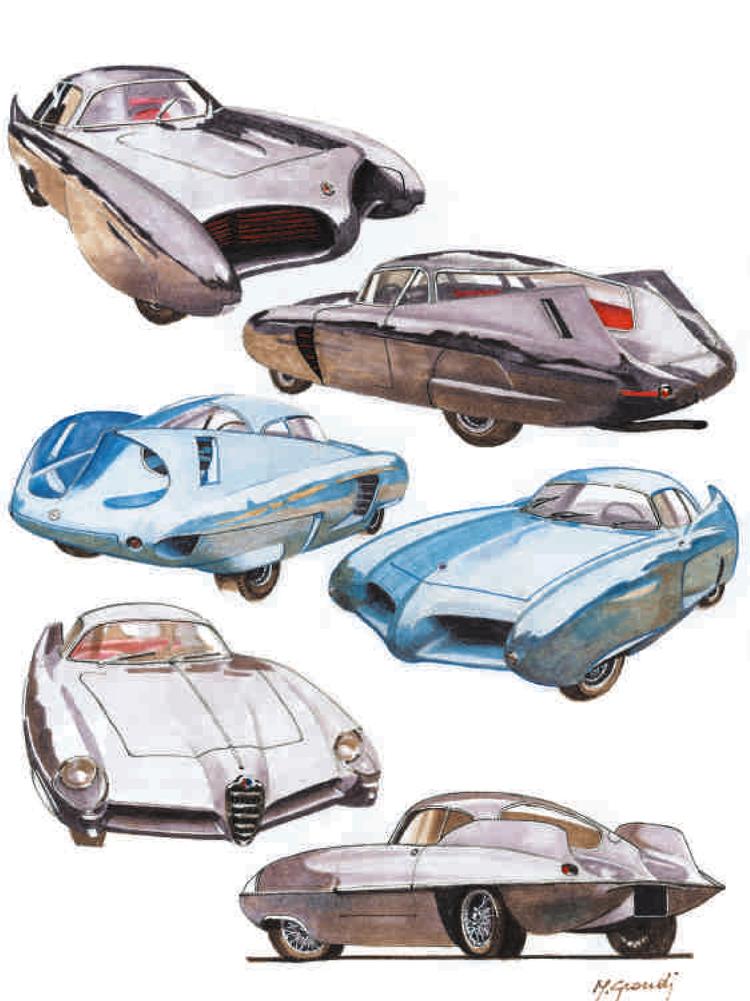
Berlina Aerodinamica Tecnica series by Scaglione, original rendering courtesy of the artist Dott. Massimo Grandi, “il Paradigna Scaglione”. Wrote Peter Brock, “Scaglione was indeed a man of impeccable taste and form with a clear understanding of aero as well. His streamliner designs for Bertone, so beautifully illustrated here by Massimo Grandi, were actually the inspiration of Bill Mitchell’s Sting Ray coupes. When Mitchell returned from the Turin show in late 1955 he brought with him a handful of photos he had taken there. He laid those out before his young designers in Research B at GM Styling and said, ‘This is the direction I wish to explore.’ You can see the clear delineation of Scaglione’s streamliner form in the XP 87 Stingray concept that debuted at Marlboro in 1959. Mitchell too had a great eye for design!”
Giovanna Scaglione remembers the Berlina Aerodinamica Tecnica
Giovanna adds that she was a very young child when the Berlinetta Aerodinamica Tecnica cars were designed by her father. However, she does recall the following story her Babbo told her as a little girl:
“These were machines designed and built, not to enter production, but for aerodynamic studies. As everyone knows, they were, however, perfectly designed and capable with certain production modifications of being produced in the future. The European market was not ready for such a futuristic car.
“I think I have told Robert that B.A.T. 7 has been taken to the Geneva Motor Show via the road by being driven instead of trucked. The Bertone staff were extremely late in completing the vehicle for the Geneva show and there was no time to take it with the truck; too slow, so Nuccio decides to take the car on the highways. Nuccio and Babbo leave with the car and with a spare car and a pair of mechanics, spare wheels and some parts that could serve in case of failure. Of course a car like this (testing license plates) attracted the attention of other motorists. When the B.A.T. for stopped gasoline a lot of people surrounded the cars’ fenders, admiring it and in doing so asked many questions.
“Time was short and they had to leave immediately. A few words of thanks and away. The two and the B.A.T. arrived at Geneva healthy and fresh: after a car wash and polish then they brought the B.A.T. 7 to the Salon. We know how much attention they raised!”
Photo Gallery by Hugues Vanhoolandt
B.A.T. 5 Alfa Romeo 1900 chassis number 01396
B.A.T. 7 Alfa Romeo 1900 chassis number 01485
B.A.T. 9 Alfa Romeo 1900 chassis number 01600
Thoughts on Scaglione’s Legacy from Strother MacMinn
Pebble Beach Restoration expert Mark Arizona and Strother MacMinn had lunch one day about 45 years ago, and MacMinn talked to Arizona about a “what if” scenario, of how the world of automotive design would have evolved if Franco Scaglione had never joined Nuccio Bertone’s firm in the first place.
*Without Franco Scaglione, the S.H. “Wacky” Arnolt projects that kept Bertone financially alive may not have happened.
*The publicity of the first B.A.T. 5 gave Mr. Bertone the chance to compete for the Giulietta (and other Alfa Romeo contracts) which kept his little Torinese design company alive as a coachbuilder.
*Without the Berlina Aerodinamica Tecnica cars series Franco Vittorio Scaglione wouldn’t have created the ATS 2500 or Alfa 33 Stradale, which were the configuration for all supercars for decades.
*And without Bertone getting the contracts because of his decision to hire Scaglione, perhaps Giorgetto Giugiaro have been hired in the industry by someone like Pininfarina instead? Look at what Giugiaro designed at Bertone and later.
*And remember Harley Earl, William Mitchell’s boss, was impressed after seeing the Berlina Aerodinamica Tecnica at the Turin Auto Show. He didn’t copy it but did he use it for the inspiration to push the “tail fin” of the immortal 1959 Cadillac to the extremely exaggerated height it became because he saw Franco Scaglione do it and the “futurism” and “aerodynamic design” it portrayed in doing so.
Below are links to all the chapters of the Giovanna Scaglione Series:
Read Part 1
Read Part 2
Read Part 3
Read Part 4
Read Part 5
Read Part 6
Read Part 7
Read Part 8
Read Part 9
Read Part 10
For even more about Franco Scaglione, click here!
If you are interested to learn more about the technical achievements and the actual construction of the 33 Stradale or are interested in the evolution of Alfa Romeo racing activities from 1964-1984 please visit our worldwide Autodelta heritage site…supplied in three languages:
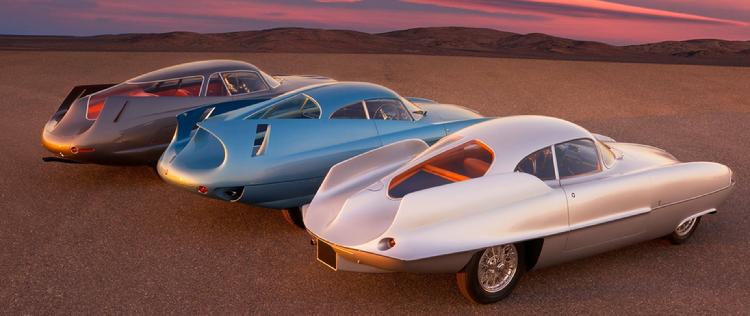
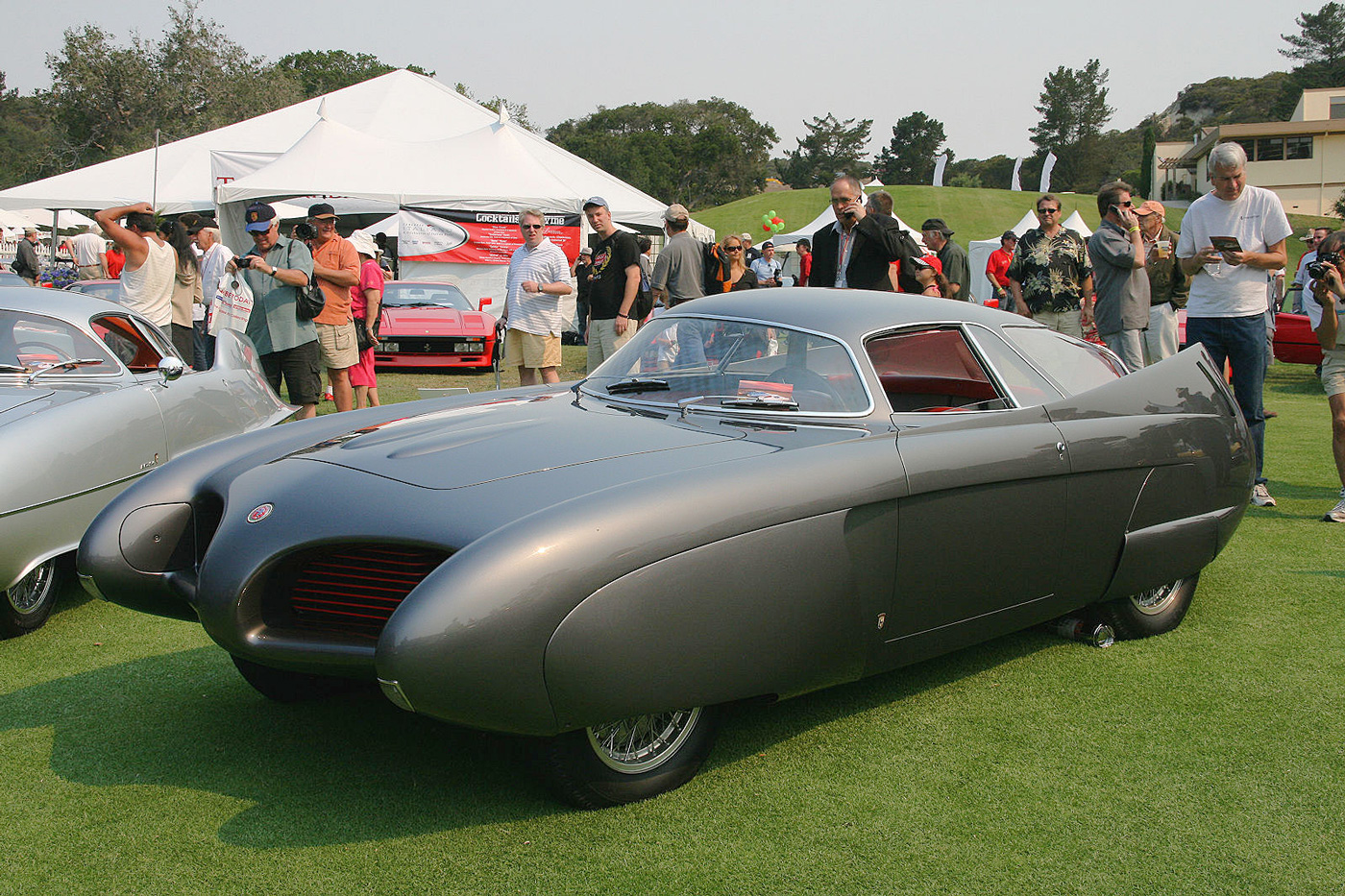
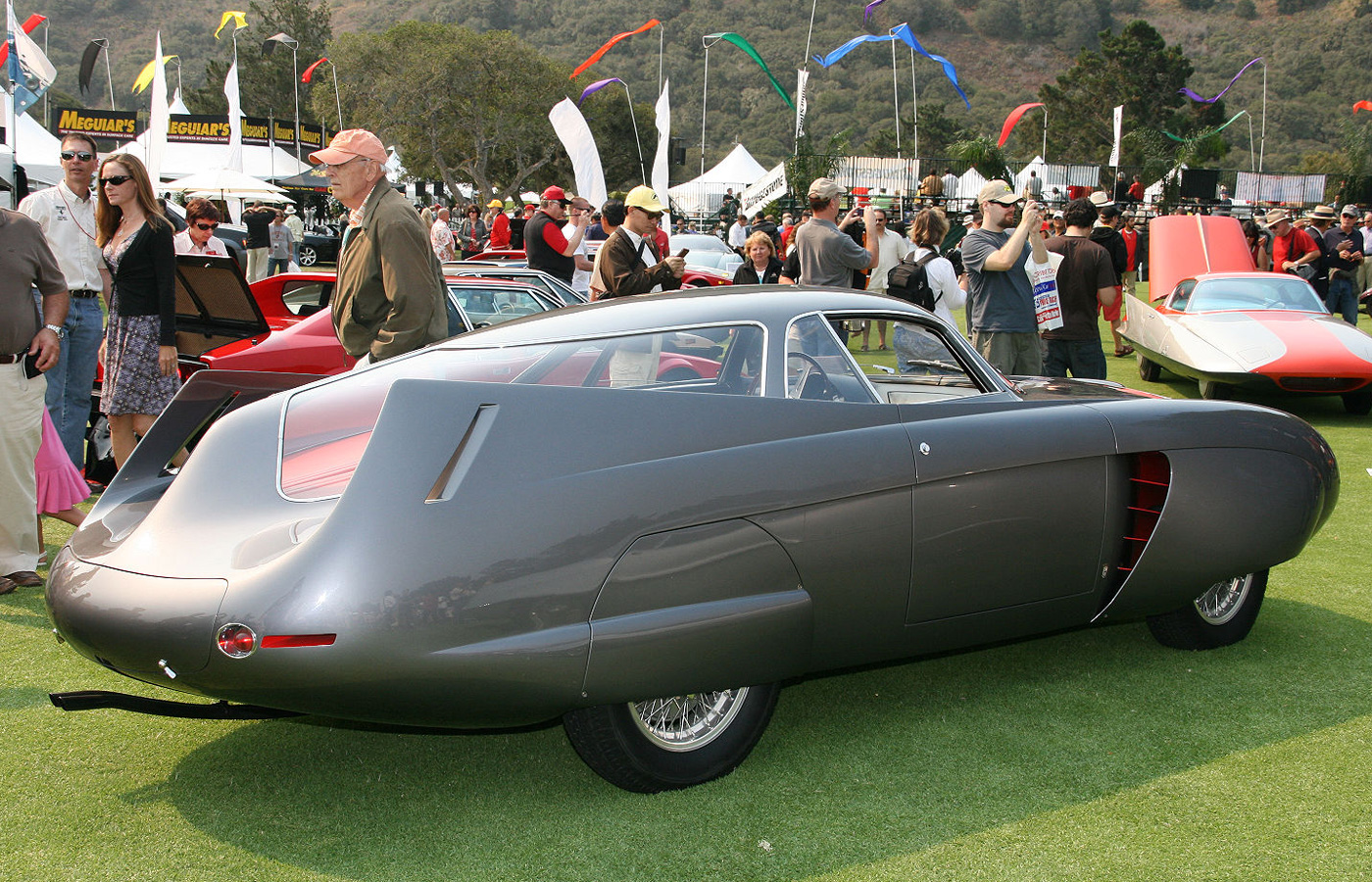
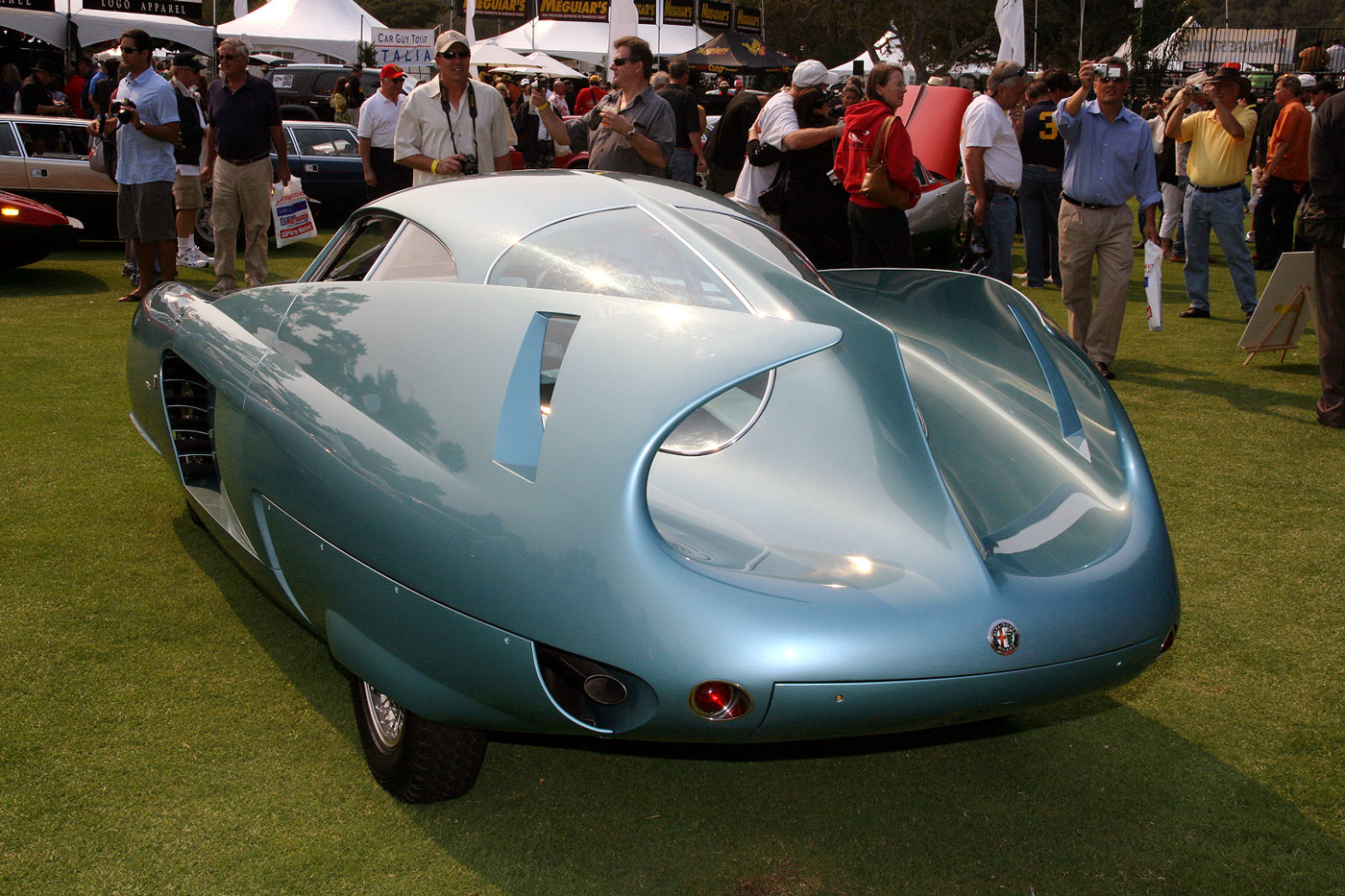
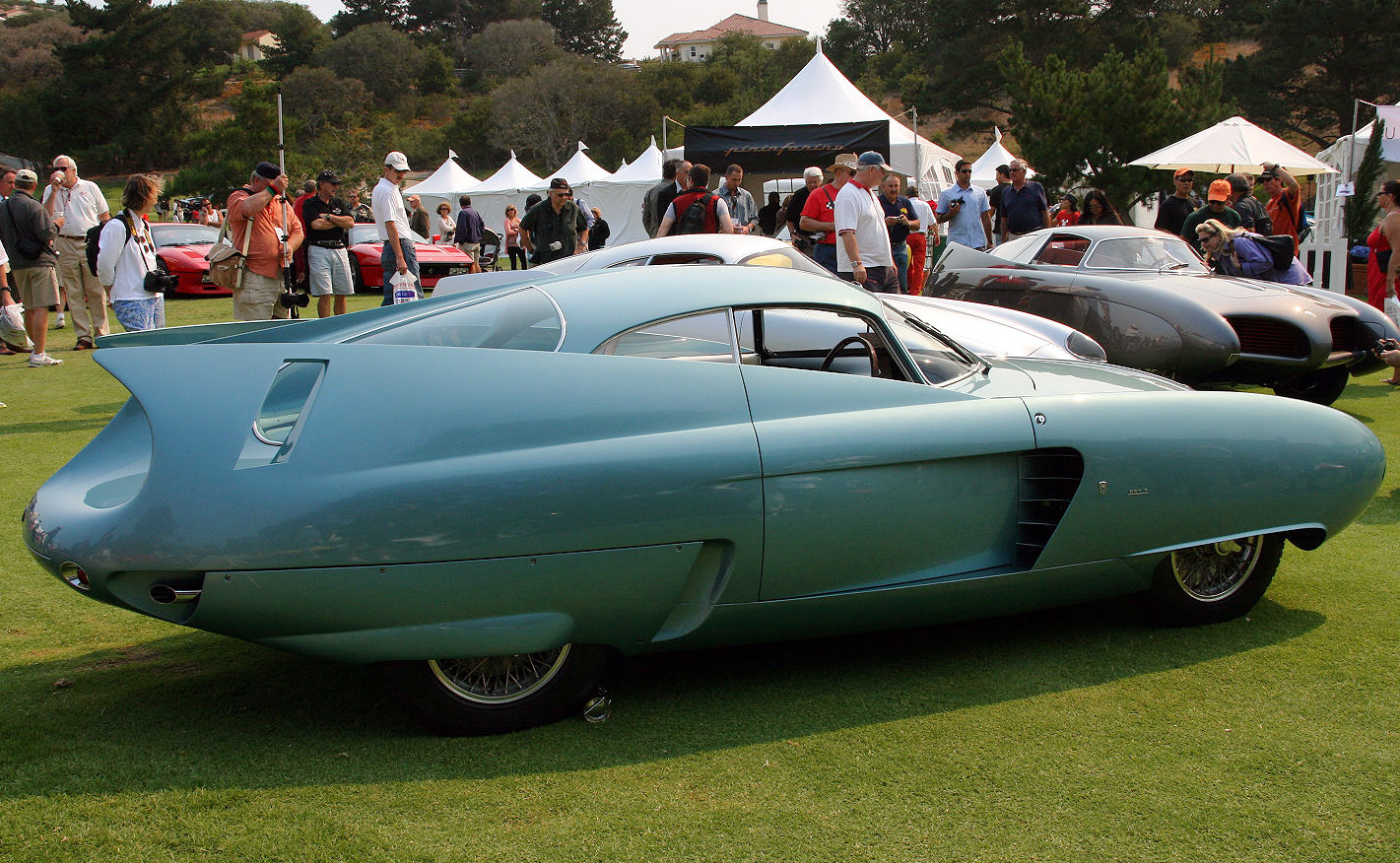
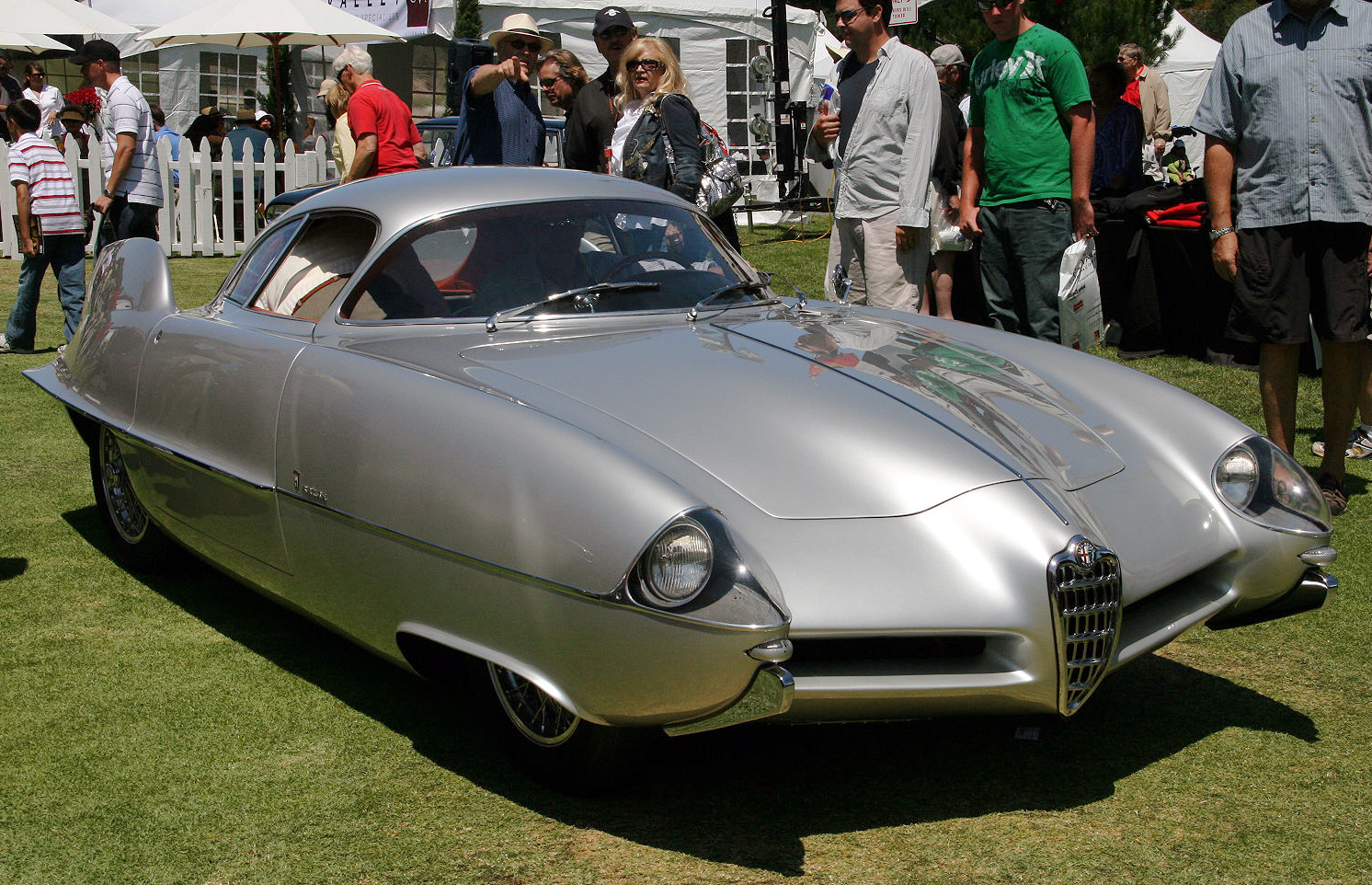
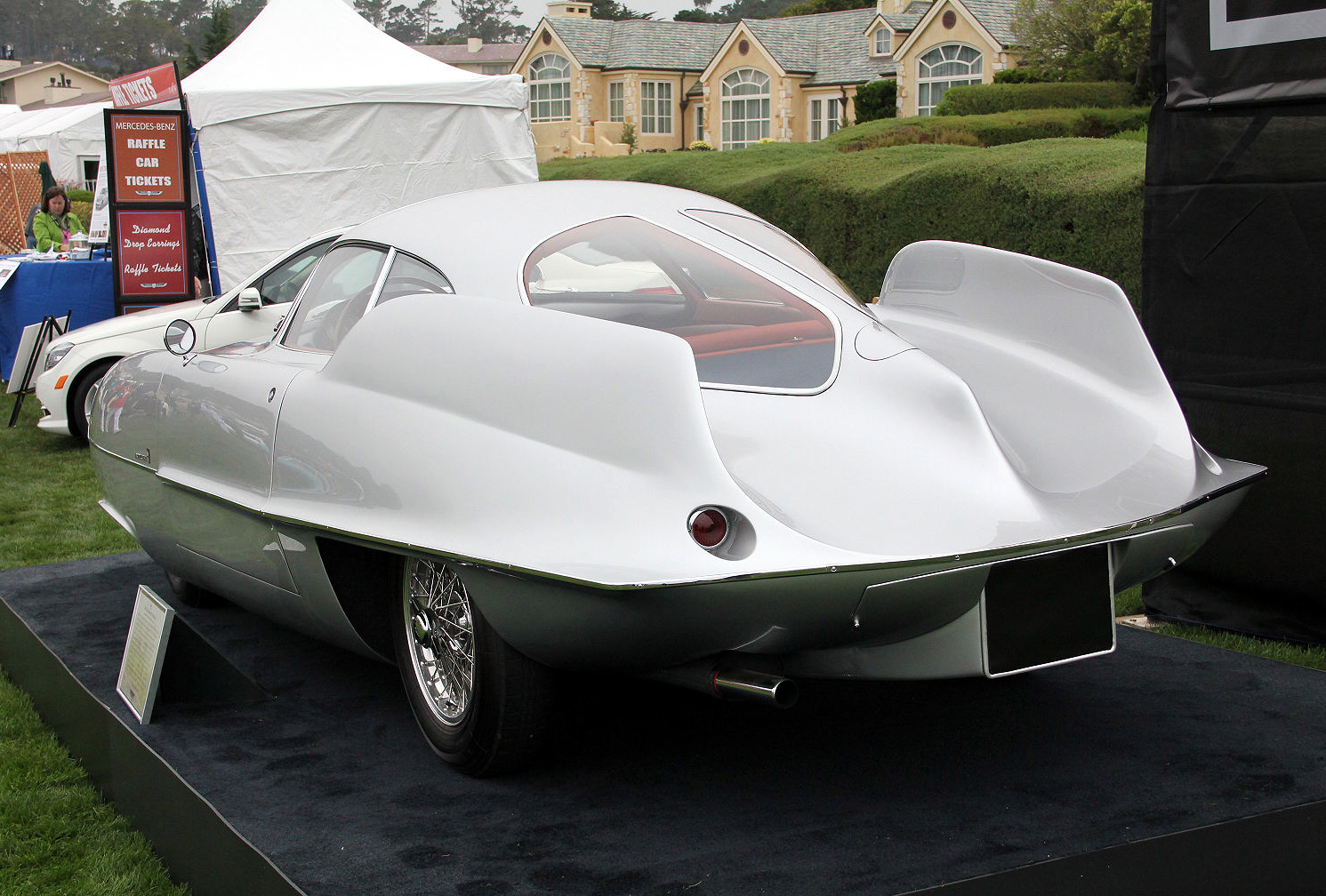
I love the comments of Strother MacMinn! He really knows what was going on in Torino at that time with Bertone and Scaglione.